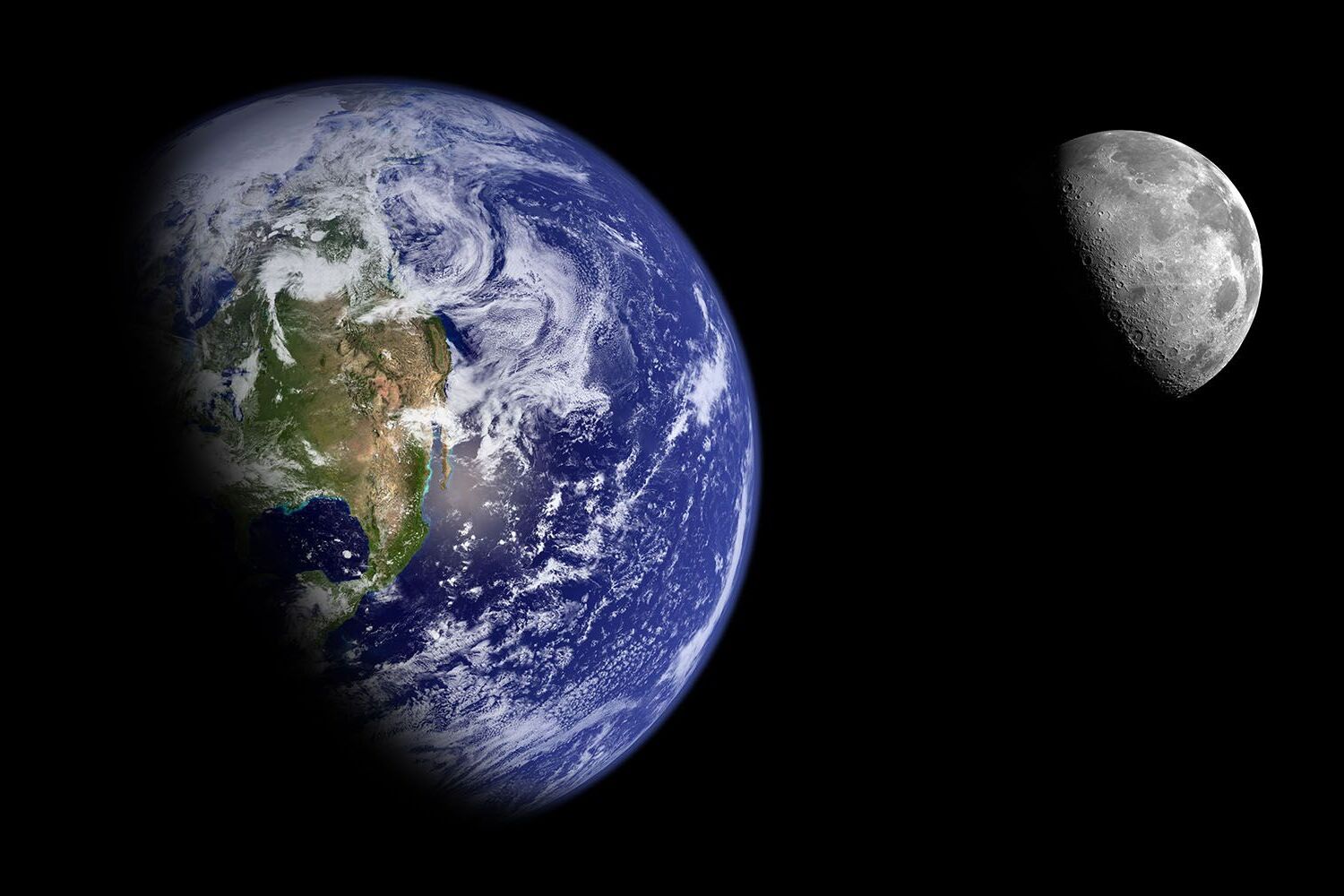
Did you know that Earth once had a second moon? This lesser-known celestial companion, often referred to as a "second moon," is a fascinating topic that has intrigued scientists and space enthusiasts alike. Unlike our familiar Moon, this second moon was much smaller and had a temporary orbit around Earth. Its existence was fleeting, lasting only a few hundred years before it either crashed into Earth or was ejected from its orbit. This transient satellite offers a unique glimpse into the dynamic nature of our planet's gravitational interactions. Let's delve into the captivating details and uncover 40 intriguing facts about Earth's second moon.
Key Takeaways:
- Earth can have temporary mini-moons, like asteroids, that orbit for a short time. They're small, hard to detect, and help us understand gravity and space risks.
- Technology and space missions help us study mini-moons, inspiring curiosity and future discoveries. The idea of a second moon fuels imagination and scientific exploration.
The Origin of the Second Moon
The concept of a second moon orbiting Earth has intrigued scientists and enthusiasts alike. While Earth has one prominent moon, theories and discoveries about a potential second moon have sparked curiosity.
-
Temporary Moons: Earth occasionally captures small asteroids that temporarily become second moons. These are known as "mini-moons" and typically stay in orbit for a few months before drifting away.
-
Kamo'oalewa: Discovered in 2016, Kamo'oalewa is a quasi-satellite of Earth. It orbits the Sun but remains close to Earth, making it a candidate for a second moon.
-
Asteroid 2006 RH120: This small asteroid was temporarily captured by Earth's gravity in 2006, becoming a mini-moon for about a year before escaping back into space.
-
Theia Hypothesis: The giant impact hypothesis suggests that a Mars-sized body named Theia collided with Earth, leading to the formation of our current Moon. Some debris from this collision might have formed temporary moons.
Characteristics of Mini-Moons
Mini-moons differ significantly from Earth's primary moon in terms of size, orbit, and lifespan. Understanding these characteristics helps us grasp their temporary nature.
-
Size: Mini-moons are typically small, ranging from a few meters to a few kilometers in diameter. This makes them much smaller than Earth's primary moon.
-
Orbit: These objects have irregular orbits that can change due to gravitational interactions with Earth and other celestial bodies.
-
Lifespan: Mini-moons have short lifespans as Earth's gravity eventually ejects them from orbit. They usually stay for a few months to a few years.
-
Detection: Detecting mini-moons is challenging due to their small size and faint visibility. Advanced telescopes and tracking systems are required.
Scientific Importance
Studying mini-moons and quasi-satellites provides valuable insights into Earth's gravitational influence and the dynamics of our solar system.
-
Gravitational Studies: Mini-moons help scientists understand Earth's gravitational pull and its effects on nearby objects.
-
Asteroid Composition: Analyzing mini-moons can reveal information about the composition of asteroids and their origins.
-
Impact Risk: Understanding the behavior of mini-moons aids in assessing the potential impact risk of near-Earth objects.
-
Space Missions: Mini-moons could serve as targets for future space missions, providing opportunities for exploration and research.
Historical Observations
Throughout history, there have been various observations and theories about additional moons orbiting Earth. These accounts, while often speculative, have contributed to our understanding of celestial phenomena.
-
Clyde Tombaugh's Search: In the 1950s, astronomer Clyde Tombaugh conducted a search for additional moons around Earth but found none.
-
Petit Moon: In 1846, French astronomer Frederic Petit claimed to have discovered a second moon, but his findings were later debunked.
-
Cruithne: Discovered in 1986, asteroid 3753 Cruithne has a unique orbit that makes it appear to follow Earth. It's sometimes referred to as Earth's "second moon."
-
Historical Myths: Various cultures have myths and legends about multiple moons, reflecting humanity's fascination with the night sky.
Future Exploration
The study of mini-moons and quasi-satellites is an evolving field, with future missions and technologies poised to uncover more about these intriguing objects.
-
NASA's Artemis Program: NASA's Artemis program aims to return humans to the Moon and could potentially study mini-moons during its missions.
-
ESA's Hera Mission: The European Space Agency's Hera mission will study the Didymos asteroid system, which includes a small moonlet, providing insights into mini-moon dynamics.
-
Advanced Telescopes: Future telescopes like the James Webb Space Telescope will enhance our ability to detect and study mini-moons.
-
Private Space Missions: Private companies are increasingly interested in space exploration, potentially leading to new discoveries about mini-moons.
The Role of Technology
Advancements in technology play a crucial role in detecting, tracking, and studying mini-moons. These innovations continue to push the boundaries of our knowledge.
-
Radar Observations: Radar technology allows scientists to observe and track mini-moons with greater precision.
-
Artificial Intelligence: AI algorithms help analyze vast amounts of data to identify potential mini-moons.
-
Space Probes: Probes equipped with advanced instruments can study mini-moons up close, providing detailed information.
-
Satellite Networks: Networks of satellites can monitor mini-moons and other near-Earth objects continuously.
The Impact on Earth
While mini-moons are temporary, their presence can have subtle effects on Earth and its environment.
-
Tidal Effects: Mini-moons can cause minor tidal effects, although much weaker than those caused by the primary moon.
-
Atmospheric Entry: When mini-moons re-enter Earth's atmosphere, they can create spectacular meteor showers.
-
Gravitational Interactions: The gravitational interactions between mini-moons and Earth can influence the orbits of other near-Earth objects.
-
Scientific Curiosity: The study of mini-moons fuels scientific curiosity and inspires future generations of astronomers.
The Broader Context
Mini-moons are part of a larger context of celestial bodies and phenomena that shape our understanding of the universe.
-
Asteroid Belt: The asteroid belt between Mars and Jupiter is a source of many mini-moons and near-Earth objects.
-
Planetary Moons: Other planets in our solar system have multiple moons, some of which are captured asteroids similar to mini-moons.
-
Kuiper Belt: The Kuiper Belt beyond Neptune contains many small objects that could become mini-moons if they venture close to Earth.
-
Oort Cloud: The distant Oort Cloud is a reservoir of comets and other icy bodies that occasionally enter the inner solar system.
The Future of Mini-Moon Research
As technology advances and our understanding of the cosmos deepens, the study of mini-moons will continue to evolve, offering new opportunities for discovery.
-
International Collaboration: Global collaboration among space agencies will enhance our ability to study mini-moons.
-
Public Engagement: Public interest in space exploration drives funding and support for mini-moon research.
-
Educational Programs: Educational initiatives inspire young scientists to pursue careers in astronomy and space science.
-
Citizen Science: Amateur astronomers and citizen scientists contribute valuable observations and data on mini-moons.
The Mystique of the Second Moon
The idea of a second moon, whether temporary or permanent, captures the imagination and highlights the dynamic nature of our solar system.
-
Cultural Impact: The concept of a second moon has influenced literature, art, and popular culture.
-
Scientific Debate: The existence and nature of mini-moons spark scientific debate and drive research.
-
Exploration Goals: The quest to understand mini-moons aligns with broader goals of space exploration and discovery.
-
Endless Possibilities: The study of mini-moons opens up endless possibilities for future research and exploration.
Final Thoughts on Second Moon
Second Moon, Earth's fascinating companion, offers a treasure trove of intriguing facts. From its formation 4.5 billion years ago to its role in stabilizing Earth's axis, this celestial body continues to captivate scientists and space enthusiasts alike. Its unique features, like tidal locking and the presence of water ice, make it a subject of ongoing research and exploration. The Moon's influence on Earth's tides and its potential for future human settlements highlight its importance in our solar system. As we continue to study and explore Second Moon, we uncover more about its composition, history, and potential resources. Whether through robotic missions or future manned expeditions, the Moon remains a key focus for understanding our place in the universe. Its mysteries and wonders ensure it will always be a source of inspiration and discovery.
Frequently Asked Questions
Was this page helpful?
Our commitment to delivering trustworthy and engaging content is at the heart of what we do. Each fact on our site is contributed by real users like you, bringing a wealth of diverse insights and information. To ensure the highest standards of accuracy and reliability, our dedicated editors meticulously review each submission. This process guarantees that the facts we share are not only fascinating but also credible. Trust in our commitment to quality and authenticity as you explore and learn with us.


